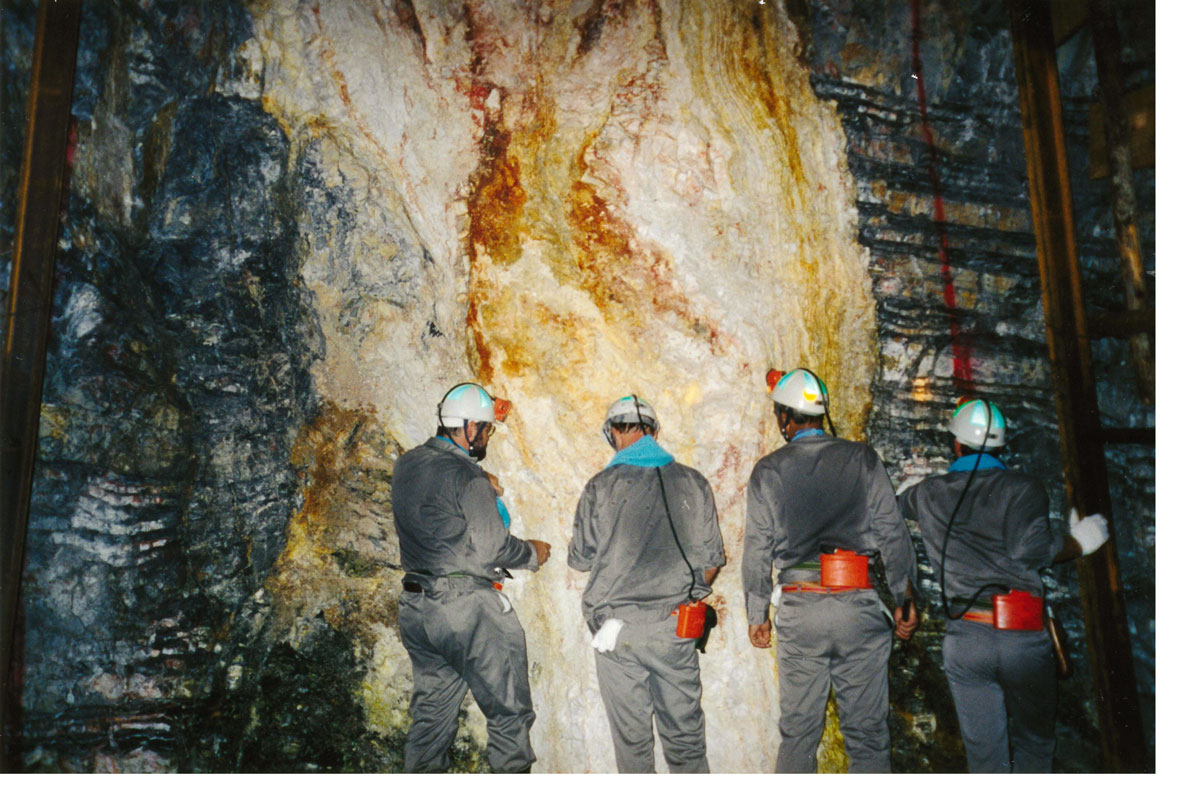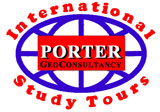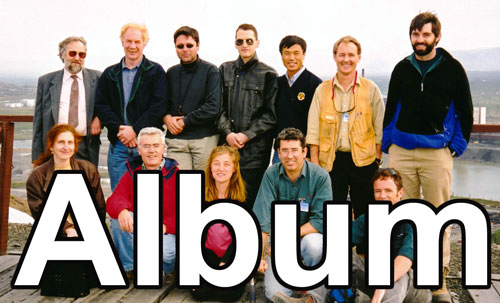| |||||||||||
|
Epithermal Gold 2005 Epithermal Gold Deposits of the Western Pacific 27 March to 8 April, 2005 | |||||||||||
|
| |||||||||||

Porter GeoConsultancy, continued its International Study Tour series of professional development courses during March and April 2005. This involved conducting a geological tour to selected, significant examples of epithermal gold deposits distributed along the western Pacific margin.
This course included deposits in Japan, Indonesia, Papua New Guinea and Australia, comprising geological mine visits, complemented by field workshops and briefings by leading international experts. The program allowed the tour participants to compare and contrast a selection of significant deposits from each of the main styles of epithermal gold deposit, with a range of ages, grades, tectonic settings and metal/gangue/alteration associations, and a variety of topographic maturity and climatic environments. The tour commenced in Fukuoka, Kyushu, Japan on the evening of Saturday 26 March, 2005 and ended in Townsville, north Queensland, Australia on the morning of Saturday 9 April 2005. Participants could take any block of 4 or more days up to the total number of days on the Tour, as suited their availability, budget and interest.
The continuing tectonic instability of the belts within which many of the younger of these deposits are found was emphasised by a mild earthquake in Kyushu upon our arrival, a major earthquake at Martabe in Indonesia, and a volcanic eruption at Rabaul en route to nearby Lihir in Papua New Guinea. In contrast the late Palaeozoic deposits in Australia are now preserved in a stable tectonic regime. The tour program was as follows:
The tour commenced when the group assembled in Fukuoka on Kyushu for an introductory meeting and dinner on the evening of Sunday 27 March. They departed by road early next morning to begin the Japanese segment of the tour: Following the Sakurajima Volcano visit, and overnighting in Kagoshima, the group flew via Fukuoka to overnight in Singapore on Thursday 31 March.
Next morning, the group flew, via Medan, to Sibolga on the mid west coast of Sumatra, to arrive at lunch time on Friday 1 April, before driving on to Martabe, where they commenced a two day visit: Following the Martabe visit the, group departed Sibolga on the morning of Sunday 3 April and flew via Medan, Singapore, Brisbane in Australia and Port Moresby in Papua New Guinea, to connect with the waiting tour charter flight to Rabaul, on the island of New Britain, where they overnighted. This had involved two days of travel and overnight flights.
The group departed Rabaul early next morning on the same charter aircraft to arrive on Lihir Island by 07:30 am: Following the Lihir visit, the group flew on to Lae on the north coast of the main island of New Guinea that evening. Next morning they took a charter helicopter out of Lae to visit the next two deposits on the itinerary, as follows: Late that day, after the Wafi-Golpu visit, the group returned to Lae by helicopter, where their fixed wing charter aircraft was waiting to take them back to Port Moresby to overnight.
After departing Port Moresby on the morning of Thursday 7 April, the group flew via Cairns in northern Queensland, Australia to Townsville 275 km to the south, then driving a further 140 km to Charters Towers, to arrive in the late afternoon. A very full day was spent at Pajingo before driving back to Charters Towers in the late afternoon to then overnight. Next morning, Saturday 9 April, they drove back to Townsville where the tour ended and the group dispersed. This study tour was planned, organised and managed by Porter GeoConsultancy Pty Limited. Image: Top left - Underground, studying a bonanza gold vein at Hishikari, Japan. | |||||||||||
| |||||||||||












